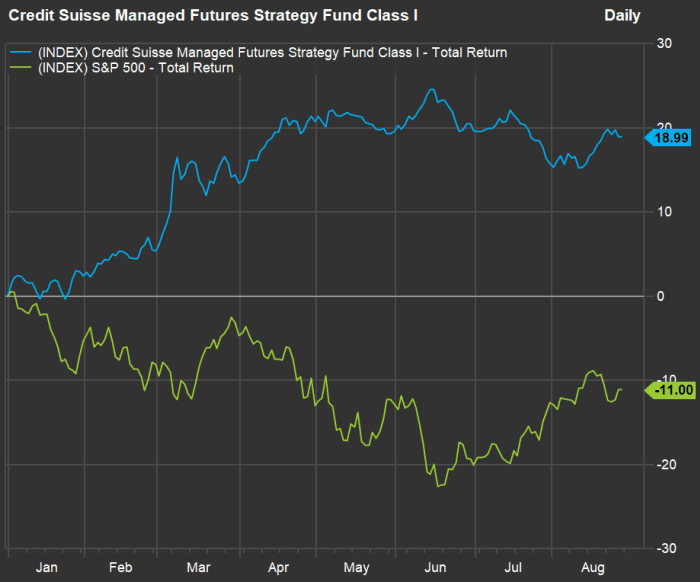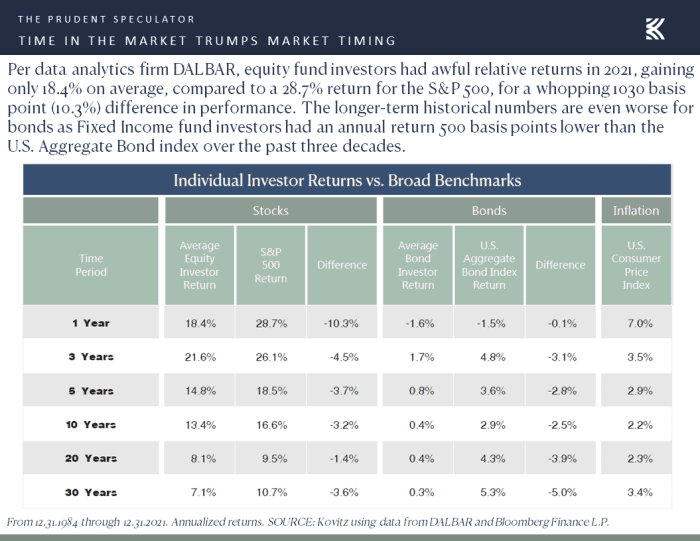Managed futures strategies can be helpful to investors during times of economic uncertainty.
The strategies seek to take advantage of price trends — up or down — and produce positive returns that offset declines elsewhere. Having some money committed to a managed futures strategy can lower a portfolio’s overall risk and potentially keep an investor from making a rash move they may regret later.
Yung-Shin Kung, investment chief of quantitative investment strategies at Credit Suisse Asset Management in New York, described a managed futures strategy that takes advantage of market rotations that give rise to “tradable trends.”
These price trends occur and can be profited from because of “lead and lag effects” in how investors process information and make investment decisions, Kung said in an interview. He added that a managed futures strategy gives the average investor access to the type of dynamic trading decisions that hedge funds use. Many institutional money managers have formal decision-making processes that can slow them down, he said.
The managed futures strategy isn’t meant to be correlated with the performance of the stock market. This year has been one of broad declines for stocks and bonds, as the Federal Reserve has taken steps to clamp down on high inflation. It has also been a good one for Kung’s strategy.
Here’s a chart showing the year-to-date performance of the Credit Suisse Managed Futures Strategy Fund
CSAIX,
and the SPDR S&P 500 ETF Trust
SPY,
:

FactSet
Here’s a look at four other managed futures strategies from May, including the Pimco Trends Managed Futures Strategy Fund
PQTIX,
Managed futures exposure can help calm investors’ fears
During periods of high volatility in the stock or bond markets, investors can find it difficult to stand firm. Time and again, the cycles of market pullbacks and recoveries have shown that most investors have been best off waiting through the cycles and even continuing to pour money in, rather than trying to time the market by waiting on the sidelines. The tendency is to re-enter after a recovery has started, hurting a portfolio’s long-term performance.
This chart, provided by John Buckingham, editor of The Prudent Speculator (published by Kovitz Investment Group of Chicago), illustrates how equity investors have hurt their long-term returns through efforts at market timing, through 2021:

Kovitz Investment Group
Credit Suisse’s managed futures strategy
Kung explained that the Credit Suisse Managed Futures Strategy is focused on “capturing price trends, up or down,” across four broad asset classes: stocks, bonds, currencies and commodities.
This is done by placing futures trades on “large bellwether instruments” to take advantage of price trends, Kung said, adding: “We do not have structural exposure to any market index.”
The management team looks at “16 distinct moving-average windows” across 18 instruments tied to the four asset classes, Kung said. For example, if nearly all moving averages for energy commodities were to show prices increasing, the fund would make a larger long trade on energy.
If there is a conflict between the moving-average indicators, implying price declines for some time periods and price increases for others, the fund will have lower exposure, or even stay out of that asset class entirely.
The most recent price trends are compared with longer trends going back three to 18 months.
“If we see the most recent several trading days’ average price is higher than it has been over a more extended window, that will signal to us an up trend,” and vice versa, Kung said.
The trades are generally front-month contracts, which are the most liquid.
“We seek to preserve a very clean reflection of trend-following,” Kung said.
A managed futures strategy typically holds cash on the sidelines. This means a fund manager might invest that cash outside the futures strategy — in long stock positions, for example.
This is not necessarily a bull-market strategy — a managed futures fund can profit during an up or down market, but probably won’t keep pace with equities during the type of asset bubble that helped fuel the last bull market.
But during a period of high inflation and price gyrations as investors overreact to monetary policy pronouncements and other events, exposure to a pure managed futures strategy can help smooth out an investor’s ride.
Don’t miss: What’s the best way to invest in tech stocks right now? This strategy is working well for one fund manager.
Hear from Ray Dalio at MarketWatch’s Best New Ideas in Money Festival on Sept. 21 and 22 in New York. The hedge-fund pioneer has strong views on where the economy is headed.
